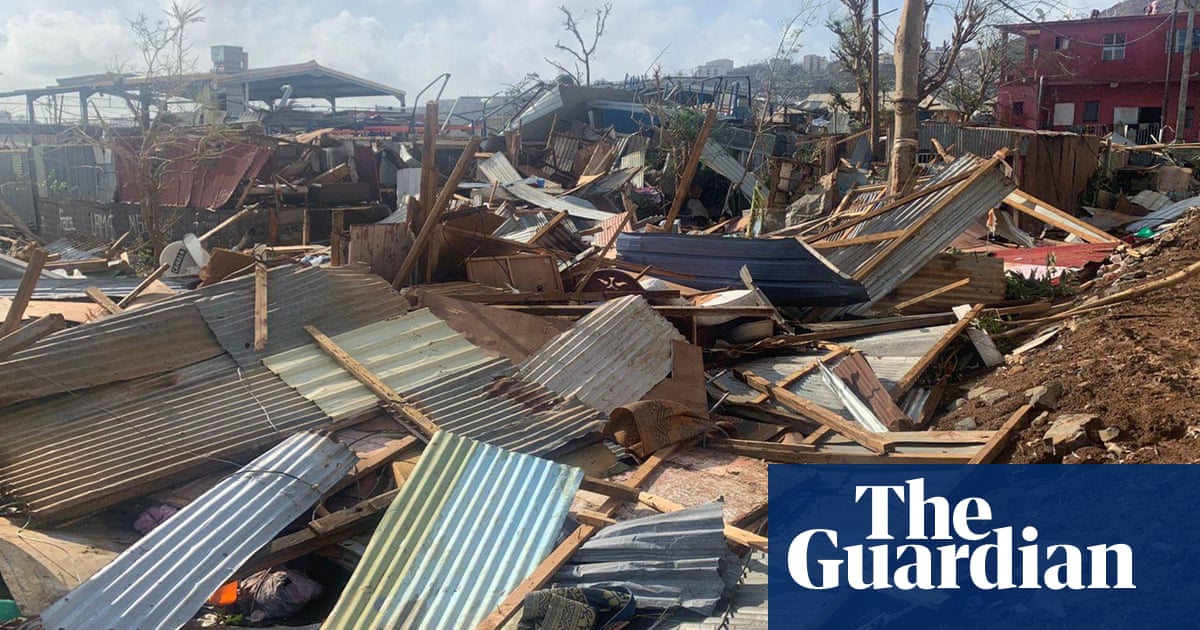Apocalyptic scenes unfolded in Mayotte, a French territory in the Indian Ocean, after Cyclone Chido, the worst storm to hit the archipelago in nearly a century, ravaged the islands on Saturday. The confirmed death toll of eleven is expected to rise dramatically, with the prefect, François-Xavier Bieuville, estimating several hundred, potentially reaching thousands of fatalities. The difficulty in establishing an accurate count stems from several factors, including the traditional Muslim practice of burying the dead within 24 hours and the significant number of undocumented immigrants—estimated by the French interior ministry to be around 100,000—who may be hesitant to seek help for fear of deportation.
The cyclone’s impact was devastating. Winds exceeding 226 kilometers per hour (140 mph) uprooted trees, destroyed homes, and crippled the already fragile infrastructure of this impoverished territory. The mayor of Mamoudzou, Ambdilwahedou Soumaila, described widespread destruction, noting damage to the hospital, schools, and countless homes. He reported nine people critically injured and 246 others seriously hurt. One resident, Ibrahim, recounted “apocalyptic scenes,” detailing his struggle to navigate blocked roads amidst the wreckage. Aerial footage captured by French gendarmerie forces revealed the extent of the devastation, showing hundreds of makeshift homes scattered across the hillsides, particularly in areas known for illegal immigration from the Comoros.
The French government responded swiftly, dispatching 160 soldiers and firefighters to supplement the 110 personnel already on the ground. Interior Minister Bruno Retailleau is scheduled to visit Mayotte on Monday. Assistance also arrived from Réunion, another French territory, with medical personnel, supplies, and equipment transported via air and sea. A first aid plane delivered three tonnes of medical supplies, blood for transfusions, and 17 medical staff. Further deployments of military aircraft and a navy patrol ship carrying personnel and equipment, including support for the electricity supplier EDF, are underway. The aim is to establish an air and sea bridge to deliver an additional 800 rescuers and over 80 tonnes of supplies in the coming days. The immediate priorities are restoring electricity and access to clean drinking water, a chronic problem exacerbated by the cyclone.
Mayotte, already France’s poorest island and the EU’s poorest territory, faced catastrophic damage. Entire neighborhoods of makeshift housing were flattened, leaving many residents homeless. The widespread destruction of infrastructure further compounds existing challenges, particularly the precarious access to clean water and sanitation. The EU’s chief, Ursula von der Leyen, and French President Emmanuel Macron have pledged aid to support the recovery efforts.
Cyclone Chido’s impact extended beyond Mayotte, affecting neighboring islands such as the Comoros, where eleven fishermen remain missing, and Madagascar. The cyclone's path continued to Mozambique, where it made landfall on Sunday, potentially affecting 2.5 million people in the north. Reports from Cabo Delgado province indicate widespread damage to homes, schools, and healthcare facilities, with at least three deaths reported so far.
The devastation caused by Chido underscores the escalating threat of increasingly powerful cyclones in the region. The frequency and intensity of these storms, linked to the climate emergency, pose a significant humanitarian crisis for already vulnerable populations in southern Africa. The disparity between these nations’ minimal contribution to global warming and the devastating impact they face highlights the urgent need for increased support from wealthier nations in addressing the effects of climate change. The legacy of Cyclone Chido serves as a stark reminder of this critical imbalance and the devastating consequences of inaction.
Hundreds feared dead as Cyclone Chido devastates French island of Mayotte
Witnesses tell of ‘apocalyptic scenes’ after worst storm to hit the Indian Ocean territory in almost a century

Related Posts

Vin Diesel states that the Fast & Furious finale depends on Paul Walker's character returning from the dead.

Cause of death revealed for Massachusetts dad found dead ‘underneath residence’ during Hilton Head vacation

